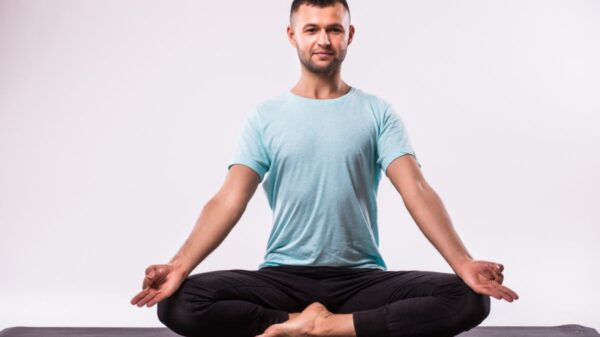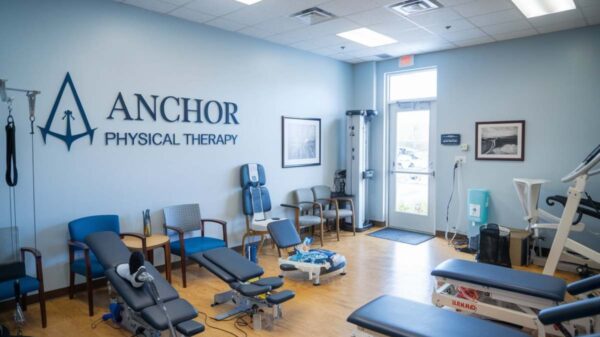In today’s digital age, many of us constantly look down at our phones, laptops, and tablets, leading to the rise of a common issue known as tech neck. This condition occurs when we maintain poor posture, often with our head tilted forward for extended periods. The strain this places on the muscles and joints of the neck & upper back can result in discomfort, stiffness, and pain.
Fortunately, there are various exercises that can help alleviate the symptoms of tech neck and promote better posture. In this blog, we will explore the causes of tech neck and introduce several practical exercises to relieve discomfort and improve neck and upper back health.
What is Tech Neck?
Tech neck refers to neck pain and discomfort caused by prolonged use of digital devices, similar as smartphones, tablets, & computers. When we hunch over these devices, the weight of head (which weighs about 10 to 12 pounds) is carried forward, increasing stress on the neck muscles and spine. This can show to muscle strain, tension headaches, & even long-term spinal problems.
 Common Symptoms of Tech Neck:
Common Symptoms of Tech Neck:
- Neck and upper back pain
- Shoulder tightness or stiffness
- Headaches
- Limited range of motion
- Fatigue in the neck and shoulders
Exercises to Relieve Tech Neck
To combat the discomfort of tech neck, it’s essential to incorporate stretches and strengthening exercises that target muscles of the neck, upper back, and shoulders. These exercises can help better posture, enhance flexibility, reduce muscle tension.
Neck Stretch
This simple stretch helps loosen the muscles along the sides of your neck, alleviating tightness caused by poor posture.
- How to do it:
- Stand up straight, keeping your shoulders relaxed.
- Slowly tilt your head regarding your right shoulder, bringing your ear closer to the shoulder.
- Hold stretch for 20 to 30 seconds, then switch to the left side.
- Repeat 3 times on each side.
Chin Tucks
Chin tucks are a great exercise for realigning the spine and strengthening the neck and upper back muscles.
- How to do it:
- Sit up straight with your shoulders relaxed.
- Gently tuck your chin toward your chest to make double chin effect.
- Hold for 5 seconds, then return to starting position.
- Repeat 10 to 15 times.
Thoracic Extension
This exercise targets the upper back (thoracic spine), helping to reduce slouching and improve overall posture.
- How to do it:
- Sit or stand up straight with your feet hip-width apart.
- Clasp your hands behind your head and gently arch your upper back, lifting your chest toward the ceiling.
- Hold for 5 seconds, then return to starting position.
- Repeat 10 times.
 Shoulder Blade Squeeze
Shoulder Blade Squeeze
Strengthening the muscles between the shoulder blades is key to preventing the slumped posture often accompanying tech neck.
- How to do it:
- Sit or stand up straight, keeping your arms relaxed at your sides.
- Press your shoulder blades together as if you are trying to hold pencil between them.
- Hold for 5 seconds, then relax.
- Repeat 10 to 15 times.
Upper Trapezius Stretch
The upper trapezius muscles on sides of the neck often become tense and tight from prolonged screen time. This stretch can help relieve that tension.
- How to do it:
- Sit up straight and relax your shoulders.
- Place your right hand on the left side of your head, gently pulling your head towards your right shoulder.
- Hold stretch for 20 to 30 seconds, then switch to the other side.
- Repeat 3 times on each side.
Additional Tips for Preventing Tech Neck
While exercises are crucial for alleviating tech neck, adopting better posture habits can help prevent it from occurring in the first place. Here are a few tips to incorporate into your daily routine:
- Take breaks: Every 20 to 30 minutes, stand up, stretch, and look away from your screen to give your neck a rest.
- Adjust your screen: Adjust your screen to eye level to avoid leaning your head forward.
- Maintain good posture: Keep your shoulders back, your spine aligned, and your head in a neutral position while using devices.
- Strengthen your core: A strong core stabilizes your upper body and enhances your posture.
Conclusion
Tech neck is a prevalent issue in our digital age, but proper awareness, exercise, and habits can significantly reduce its effects. Incorporate these exercises into daily routine, remember to maintain good posture throughout day to prevent discomfort from returning.
By taking small steps like these, you can keep your neck and back healthy, even as you navigate the world of technology. If pain persists or worsens, consult healthcare professional to ensure there are no underlying issues.


 Common Symptoms of Tech Neck:
Common Symptoms of Tech Neck: Shoulder Blade Squeeze
Shoulder Blade Squeeze














